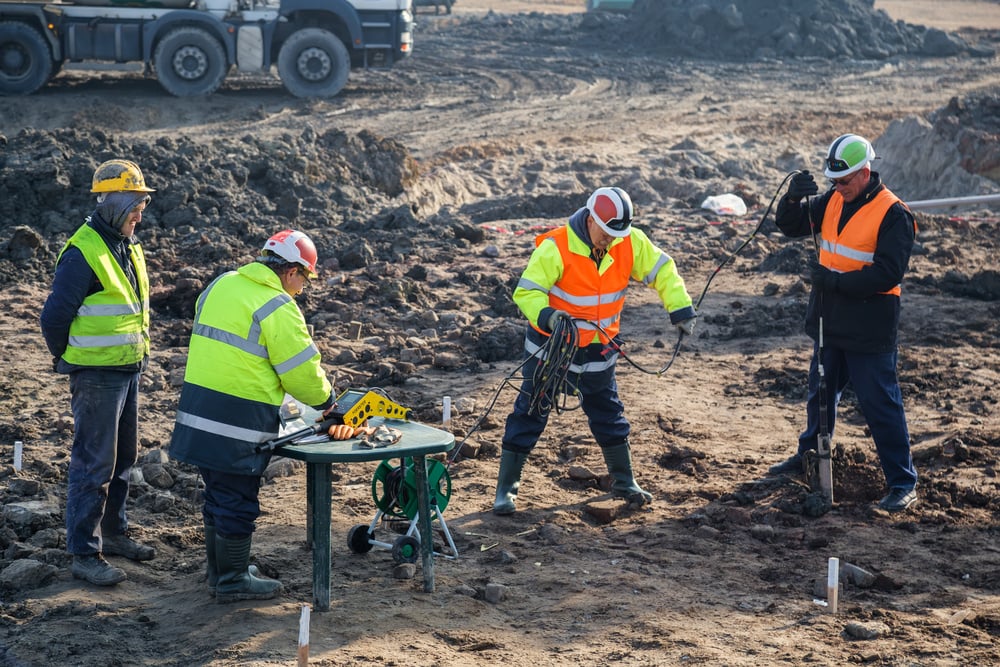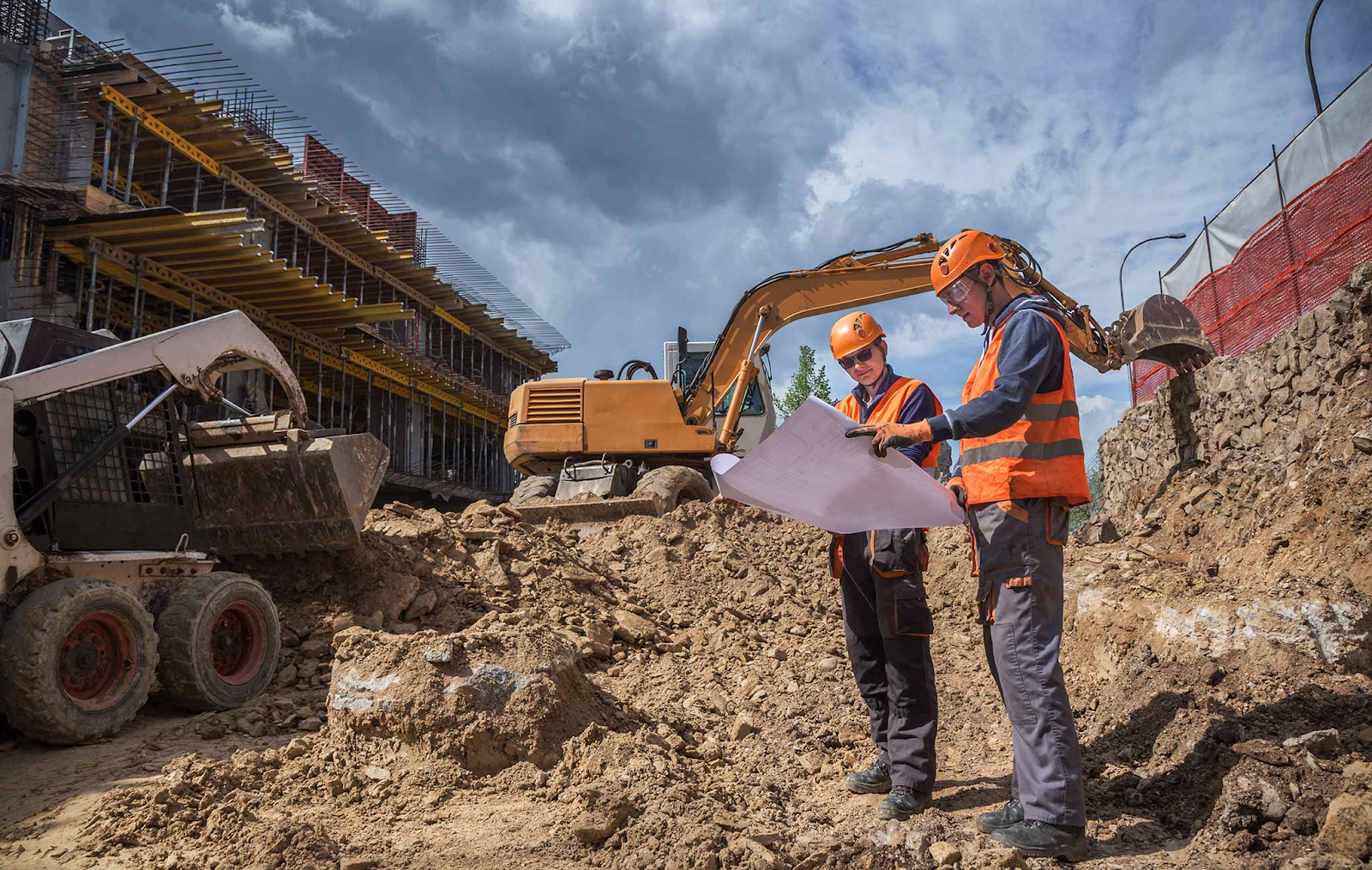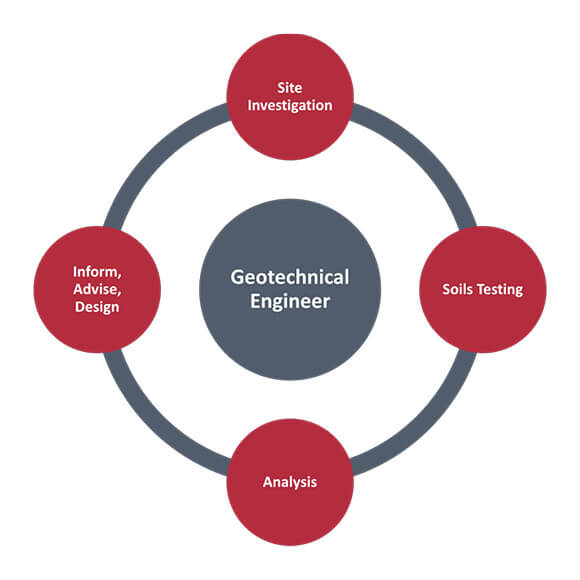An Unbiased View of Geotechnical Engineering For Construction Projects
Table of ContentsSome Ideas on Geotechnical Engineering For Construction Projects You Should KnowGeotechnical Engineering For Construction Projects Fundamentals ExplainedExamine This Report on Geotechnical Engineering For Construction ProjectsGeotechnical Engineering For Construction Projects Fundamentals ExplainedIndicators on Geotechnical Engineering For Construction Projects You Should KnowNot known Incorrect Statements About Geotechnical Engineering For Construction Projects The Of Geotechnical Engineering For Construction Projects
Concepts and Method of Ground Renovation. Ground Renovation Principles And Applications In Asia. Design analysis in rock technicians.Cengage Understanding, Stamford, 666 p. Atkinson, J., 2007. The auto mechanics of soils and foundations. Taylor & Francis, N.Y., 442 p. Floating Offshore Wind Wind Turbines: Actions in a Sea state Pareto Optimum Designs and Financial Analysis, P. Sclavounos et al., October 2007. Nicholson, D, Tse, C and Cent, C. (1999 ). The Observational Technique in ground engineering principles and applications.
Geotechnical Engineering For Construction Projects - The Facts
Research laboratory and field screening plays an important role in this procedure. By drawing out samples from the planet's subsurface and applying a suite of tests, geotechnical designers can predict the behaviour of dirt layers and examine their suitability for numerous building and construction endeavours. The significance of geotechnical design in civil engineering can not be overemphasized, attributable to numerous factors: The preliminary action in any geotechnical research entails figuring out the soil kind at the building site.
Understanding these features ensures that only appropriate dirt kinds are chosen for the growth, thus preventing potential structural failings. The structure functions as the bedrock of any construction project. Selecting the ideal foundation type is a decision that depends upon the extensive analysis given by geotechnical engineering. This makes sure the long life and security of frameworks by accommodating the tons they will certainly birth.

Geotechnical website examination is a critical step in the planning and execution of any type of building job. It includes the collection and evaluation of information connected to the physical residential properties of soil and rock below a suggested construction website. This details is crucial for the style and building of safe, stable, and sustainable structures.
The Best Strategy To Use For Geotechnical Engineering For Construction Projects
In this blog site, we will explore the relevance of geotechnical site examination, its various elements, and just how it benefits building and construction projects. Geotechnical site examination, likewise known as subsurface exploration, entails a series of activities focused on figuring out the dirt, rock, and groundwater conditions at a building and construction site. The main objectives are to determine potential geotechnical hazards, analyze the design residential or commercial properties of subsurface materials, and offer referrals for the layout and construction of foundations, retaining wall surfaces, and other frameworks.
This may include geological maps, aerial photos, previous examination records, and historic information. The workdesk research aids in identifying prospective geotechnical problems and preparing the succeeding fieldwork. Following the desk research, a website reconnaissance is carried out to aesthetically evaluate the website and its surroundings. This entails observing the topography, drain patterns, existing frameworks, plant life, and any signs of instability or disintegration.
The Greatest Guide To Geotechnical Engineering For Construction Projects
Shallow test pits are dug deep into to straight observe and example the dirt and rock. This technique serves for studying the upper layers of the subsurface and determining near-surface dangers. Non-invasive geophysical approaches, such as seismic refraction, ground-penetrating radar (GPR), and electrical resistivity tomography (ERT), are utilized to map subsurface problems and identify anomalies.
Soil and rock samples gathered during the area investigation are subjected to research laboratory testing to identify their physical and mechanical homes. These examinations give essential data for geotechnical analysis and style.
The main benefit of geotechnical website examination is making certain the security and security of frameworks. By comprehending the subsurface problems, designers can read what he said develop foundations and various other architectural components that can hold up against the lots and ecological forces they will go through. This lessens the danger of settlement, subsidence, and structural failing.
See This Report about Geotechnical Engineering For Construction Projects
This guarantees efficient and safe building and construction methods. Geotechnical site examinations are frequently required by constructing codes and laws.
This info is indispensable for job managers, engineers, and specialists in developing practical routines, budgets, and contingency plans. Geotechnical Engineering for Construction Projects. Skyscraper Building in a Coastal AreaIn a coastal city, a skyscraper domestic building was intended on a site with suspected loose sand deposits and a high water table. A comprehensive geotechnical investigation, including borehole boring, CPT, and geophysical studies, was carried out
An Unbiased View of Geotechnical Engineering For Construction Projects
Based on these findings, the structure style was changed to consist of deep pile foundations expanding into stable strata, and ground renovation methods, such as vibro-compaction, were carried out to mitigate liquefaction risks. This aggressive strategy made sure the security and stability of the structure while staying clear of expensive post-construction remediation. Infrastructure Growth on a Sloping TerrainA significant facilities job, entailing the building of a freeway and bridges, was prepared on a hilly surface with steep slopes.

The Leaning Tower of Pisa (Italy), a legendary building marvel, is infamous for its unintended tilt from substantial geotechnical concerns. The tower's foundation was inadequately created to take care of the soft, unpredictable dirt below it, leading to irregular negotiation and its unique lean. Our world is populated with outstanding framework my response projectsfrom towering skyscrapers to stretching bridgesall standing statement to the evolution of the numerous building and construction devices and methods available.
Geotechnical engineering is a customized field within civil design that concentrates on researching the habits of earth materials. This branch dives deep into the groundinvestigating how the dirt, rock, and groundwater at a building and construction website can influenceand be influenced bythe facilities that we erect on and into them. Before a solitary block is laid or a concrete foundation put, geotechnical designers probe right into the earthgathering vital data about the website's soil make-up, rock structure, and groundwater degrees.
The 10-Minute Rule for Geotechnical Engineering For Construction Projects

is a device used to analyze the integrity and load-bearing ability of piles throughout setup, leveraging the concept of wave propagation. It maximizes building effectiveness by giving real-time assessments, hence making sure secure and efficient heap structures. Among the useful applications of geotechnical design entails making a decision and performing the right approaches for structure building.
Pile driving stands for greater than the simple act of inserting structural aspects into the ground. As a dig this matter of fact, it is a very carefully orchestrated process of transferring a structure's tons past the much less secure dirt layers closer to the surfacedown to the more considerable strata that exist beneath. In the situation of pile driving, take into consideration exactly how geotechnical designers skillfully use this method to uniformly disperse the framework's weight.
Comments on “Geotechnical Engineering For Construction Projects for Beginners”